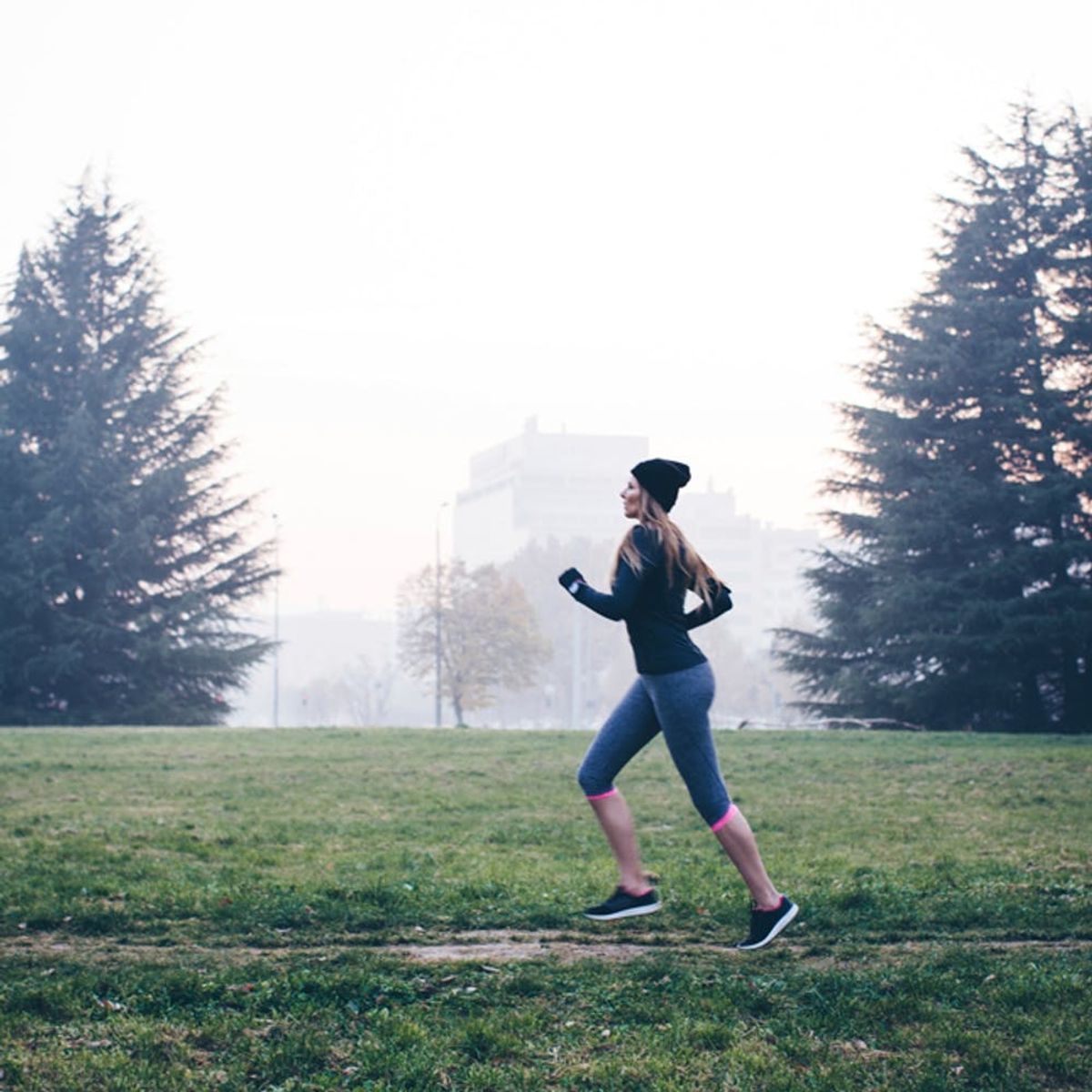Don’t let early sunsets and snowy streets keep you from getting your sweat on.
5 Safety Hacks I Learned from Being a Winter Runner

I’ll never forget the day I went for my first run.
Of course, outdoor workouts do come with some specific challenges for runners, walkers and cyclists who prefer the pavement to the treadmill or stationary bike. The sun sets before we’re out of the office, and depending on where in the country you are, you might have ice, snow and freezing temperatures to contend with. Rather than resign ourselves to the indoor gym, here are five winter workout hacks.
1. See and be seen: Brightly colored shirts aren’t enough. Make sure you are seen. I went to my local running shop and picked up a reflective belt with a little front-facing LED light. Cars can see me from a mile away when I’m running after work, and I can see the sidewalk ahead of me, so my chances of tripping are minimized.
2. Stay hydrated: Any endurance athlete knows the importance of hydrating, but I’ve been guilty more than once of neglecting the water fountain in the winter because the sweat hides under all those layers. I’ve felt enough muscle cramps to know that winter dehydration is a real threat. I make it a point to drink enough water before, during, and after a long run, even if I’m not feeling the thirst like I do in July.
3. Make your location known: Communication is key. Whenever I take a new route, I make sure to let someone know what streets I’ll be hitting. One marathon-running friend of mine uses the Find Friends app on her iPhone when she heads out, so her husband can check in on her movements. With all the different GPS devices that track your location, there’s always a way to make sure someone knows where you are in case of emergency.
4. Never try a new route at night: Winter darkness makes it difficult to distinguish the quirks of a road, especially if you’re seeing it for the first time half-blind. Save the new paths for daylight when it is easier to be mindful of sidewalk cracks, uneven ground or stray tree roots.
5. Bring ID and emergency money: It is wise to never leave the house without a plan B. I wear a Road ID bracelet with my full name and birth year, town of residence and emergency contact’s phone number. It helps me feel safe knowing that emergency responders would know how to reach my ICE person in a worst-case scenario. For a less-awful but still unpleasant situation, I have the Uber app on my phone and ready to go. If your city does not have Uber, stash an emergency $20 for cab fare somewhere safe.
Are you active outdoors during the winter? Share your best tip for a safe winter workout in the comments!



















